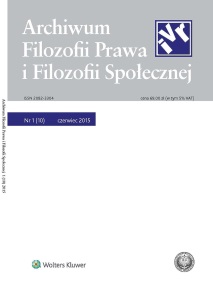Koherencyjny model rozumowań prawniczych
Coherence Model of Legal Reasoning
Author(s): Michał AraszkiewiczSubject(s): Law, Constitution, Jurisprudence, Logic, Ethics / Practical Philosophy, Philosophy of Law, Philosophy of Law, Sociology of Law
Published by: Stowarzyszenie Filozofii Prawa i Filozofii Społecznej – Sekcja Polska IVR
Keywords: legal argumentation; legal reasoning; coherence; cohesion
Summary/Abstract: The aim of the article is to present a model of legal reasoning based of the concept of coherence, as this concept is understood in recent developments of cognitive science. More precisely, the model, hereafter referred to as CMLR (Coherence Model of Legal Reasoning) is based on the constraint satisfaction theory of coherence, elaborated and defended by Paul Thagard. The claim of the author is that CMLR appears very satisfactory when assessed against criteria typically employed for evaluation of legal-theoretical models of argumentation. It is able to represent legal reasoning either as a neural network or, more traditionally, as a formal dialogue game. In consequence, CMLR offers a plausible “third road” between traditional deductive and non-deductive models of legal thinking.
Journal: Archiwum Filozofii Prawa i Filozofii Społecznej
- Issue Year: 1/2010
- Issue No: 1
- Page Range: 19-38
- Page Count: 19
- Language: Polish

